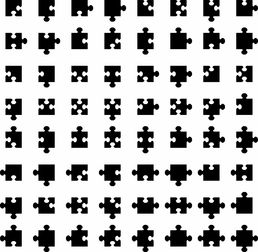Exploring the Beauty of Poetry through Translation
Poetry, in its essence, is a timeless expression of human emotions, thoughts, and experiences. When we delve into the world of poetry, we often encounter works of profound beauty that transcend linguistic boundaries. Translating poetry from one language to another is both a challenging and enriching endeavor. Let's explore the process of translating poetry from its original language into English, and the nuances involved in capturing its essence.
Understanding the Original Poem
Before embarking on the translation journey, it's crucial to fully grasp the meaning, emotions, and cultural context embedded within the original poem. Every word, every metaphor, and every line contributes to the holistic experience that the poet intends to convey. Thus, a deep understanding of the original language and culture is essential.
Embracing Cultural Nuances
Poetry is deeply intertwined with culture, reflecting the beliefs, traditions, and values of a society. When translating a poem, it's imperative to consider the cultural nuances to ensure that the essence of the original work is preserved. Certain words or phrases may carry specific cultural connotations that don't have direct equivalents in English. In such cases, translators often face the challenge of finding the most appropriate substitute that maintains the poetic integrity.
Capturing the Poetic Essence

The beauty of poetry lies in its ability to evoke emotions and create vivid imagery through language. Translating poetry requires more than just literal translation; it demands capturing the poetic essence and maintaining the rhythm, rhyme, and meter of the original piece. Translators often employ various techniques such as rhyme, alliteration, and metaphor to recreate the musicality and beauty of the original poem in English.
Balancing Literal and Figurative Meanings
One of the complexities of translating poetry is striking a balance between the literal and figurative meanings of the text. While staying true to the literal meaning is important, it's equally crucial to convey the deeper symbolic layers and metaphors present in the original poem. Translators must navigate this delicate balance to ensure that the translated poem resonates with readers on both intellectual and emotional levels.
Preserving Poetic Devices
Poets often use a wide range of literary devices such as simile, metaphor, imagery, and symbolism to enrich their work. Translating these poetic devices requires creativity and ingenuity to retain their impact in the target language. Translators may need to adapt or reinterpret certain devices to suit the linguistic and cultural context of the Englishspeaking audience while staying faithful to the original intent of the poet.
Conclusion: Celebrating Poetry in Translation
Translating poetry is a labor of love that requires not only linguistic proficiency but also a deep appreciation for the art form. While no translation can fully capture the entirety of the original poem, a wellexecuted translation can introduce the beauty of poetry to a wider audience and foster crosscultural understanding and appreciation. Through the delicate interplay of language and imagination, poetry transcends borders, inviting readers to embark on a journey of exploration and discovery, one verse at a time.
版权声明
本文仅代表作者观点,不代表百度立场。
本文系作者授权百度百家发表,未经许可,不得转载。








